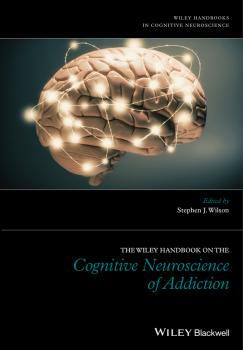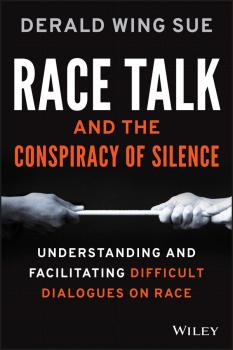ТОП просматриваемых книг сайта:
Общая психология
Различные книги в жанре Общая психология, доступные для чтения и скачиванияАннотация
The 2nd Edition of Introduction to the Practice of Psychoanalytic Psychotherapy, the highly successful practice-oriented handbook designed to demystify psychoanalytic psychotherapy, is updated and revised to reflect the latest developments in the field. Updated edition of an extremely successful textbook in its field, featuring numerous updates to reflect the latest research and evidence base Demystifies the processes underpinning psychoanalytic psychotherapy, particularly the development of the analytic attitude guided by principles of clinical technique Provides step-by-step guidance in key areas such as how to conduct assessments, how to formulate cases in psychodynamic terms and how to approach endings The author is a leader in the field – she is General Editor of the New Library of Psychoanalysis book series and a former editor of Psychoanalytic Psychotherapy
Аннотация
The Psychology of Interpersonal Violence is a textbook which gives comprehensive coverage of interpersonal violence – exploring the various violent acts that occur between individuals in contemporary society. Examines in detail the controversial use of corporal punishment Explores ways that psychology can add to our understanding of interpersonal violence Offers directions for future research that can help to prevent or reduce incidents of interpersonal violence
Аннотация
The Wiley Handbook of Sex Therapy is a comprehensive and empirically-based review of the latest theory and practice in the psychotherapeutic treatment of sexual problems across client populations. Structured in four sections covering specific sexual dysfunctions, theoretical approaches to sex therapy; working with client diversity; and future directions in sex therapy Advocates a holistic approach to sex therapy with a focus on using a range of psychotherapeutic theories and techniques rather than only the most popular behavioral strategies Includes case studies which highlight the broad spectrum of diverse conditions that clients can experience and which sex therapists can therefore encounter in the consulting room Includes contributions by more than 60 experts from a wide range of disciplines
Аннотация
This volume provides a thorough and up-to-date synthesis of the expansive and highly influential literature from the last 30 years by bringing together contributions from leading authorities in the field, with emphasis placed on the most commonly investigated drugs of abuse. Emphasises the most commonly investigated drugs of abuse, including alcohol, cocaine, nicotine, and opiates Brings together the work of the leading authorities in all major areas of the field Provides novel coverage of cutting-edge methods for using cognitive neuroscience to advance the treatment of addiction, including real-time neurofeedback and brain stimulation methods Includes new material on emerging themes and future directions in the use of cognitive neuroscience to advance addiction science
Аннотация
Great Myths of the Brain introduces readers to the field of neuroscience by examining popular myths about the human brain. Explores commonly-held myths of the brain through the lens of scientific research, backing up claims with studies and other evidence from the literature Looks at enduring myths such as “Do we only use 10% of our brain?”, “Pregnant women lose their mind”, “Right-brained people are more creative” and many more. Delves into myths relating to specific brain disorders, including epilepsy, autism, dementia, and others Written engagingly and accessibly for students and lay readers alike, providing a unique introduction to the study of the brain Teaches readers how to spot neuro hype and neuro-nonsense claims in the media
Аннотация
This book identifies and addresses potential clinical issues for clients who have family members struggling with addiction, and offers concrete strategies for treatment. Viewing addiction as a family disease, Dr. Kelly explores the complex challenges faced by family members, examines the ways in which substance use disorders affect family dynamics, and discusses behaviors that help sustain recovery and create and maintain healthy relationships. A brief history of substance abuse is provided, as are the primary models of addiction and family theory. Chapters on codependency and the emotional, relational, and behavioral consequences of living with a family member with a substance use disorder follow. The universality of substance abuse is then examined along with specific ethnic and cultural differences. Family support group treatment options complete the text. Case conceptualization exercises that contain reflections, implications for the counselor, and discussion questions for application of the material are interspersed throughout the book to link theory to practice. *Requests for digital versions from the ACA can be found on wiley.com. *To request print copies, please visit the ACA website.
Race Talk and the Conspiracy of Silence. Understanding and Facilitating Difficult Dialogues on Race - Derald Sue Wing
Аннотация
Learn to talk about race openly, honestly, and productively Most people avoid discussion of race-related topics because of the strong emotions and feelings of discomfort that inevitably accompany such conversations. Rather than endure the conflict of racial realities, many people choose instead to avoid the topic altogether, or remain silent when it is raised. Race Talk and the Conspiracy of Silence: Understanding and Facilitating Difficult Dialogues on Race puts an end to that dynamic by sharing strategies for smoothing conversations about race in a productive manner. A guide for facilitating and participating in difficult dialogues about race, author Derald Wing Sue – an internationally recognized expert on multiculturalism, diversity, and microaggressions – explores the characteristics, dynamics, and meaning behind discussions about race as well as the hidden «ground rules» that inhibit honest and productive dialogue. Through emotional and visceral examples, this book explains why conversations revolving around racial issues are so difficult, and provides guidelines, techniques, and advice for navigating and leading honest and forthright discussions. Readers will develop a stronger ability to build rapport with people unlike themselves, and discover how not talking about race impacts society as a whole. Overcome and make visible the fears associated with race talk Learn practical ideas for talking openly about race Facilitate and navigate discussion with expert strategy Examine the hidden rules that govern race talk Understand the benefits of successful conversations Discussions about race do not have to result in disastrous consequences, and can in fact be highly beneficial to all parties involved. It's important that people have the ability to converse openly and honestly with their students, colleagues, children, and neighbors, and Race Talk provides the path for achieving this goal.
Assessing Neuromotor Readiness for Learning. The INPP Developmental Screening Test and School Intervention Programme - Sally Blythe Goddard
Аннотация
Assessing Neuromotor Readiness for Learning is a substantially revised and expanded edition of a long established INPP training manual that has been consistently proven in practice. The package includes tests for children, a developmental movement programme, and information about online access to INPP video training materials. Based on the proven INPP model for neuromotor development screening and intervention, which is unique in having been rigorously evaluated in research and practice Expands and revises an INPP manual which has previously only been available to training customers, and which is a foundation stone of the overall INPP approach Places emphasis on children's physical development and how neuro-motor skills provide the foundations for learning success. The package includes batteries of tests for younger and older children, a developmental movement programme This book may be supported and enhanced by INPP video training materials and score sheets, available for download purchase from the INPP website
Cognitive Behavioral Psychopharmacology. The Clinical Practice of Evidence-Based Biopsychosocial Integration - Mark Muse
Аннотация
Outlines a comprehensive, evidence-based approach to coordinating psychopharmacological and psychotherapeutic treatments Cognitive Behavioral Psychopharmacology takes an evidence-based approach to demonstrating the advantages of biopsychosocial integration in interventions for the major psychiatric diagnoses. It is the first and only book to translate the current evidence for cognitive behavioral, psychosocial, and pharmacologic approaches to mental health disorders into clear guidance for clinical practice. There is a burgeoning movement in mental health to acknowledge the entire person’s functioning across physical, psychological and social spheres, and to integrate medical as well as psychological and social interventions to address the entire spectrum of presenting problems. This book bridges a gap in the professional mental health literature on the subject of standalone versus combined treatment approaches. It reviews the current state of integrative care, and makes a strong case that optimal outcomes are best achieved by an awareness of how and why the cognitive-behavioral aspects of prescribed medical and psychological interventions influence treatment. Each disorder-specific chapter is authored by a prescriber and psychotherapist team who consider all the evidence around treatments and combinations, providing outcome conclusions and concise tables of recommended front-line interventions. Provides a biopsychsocial perspective that integrates the medical, psychotherapeutic, family, and community aspects of the therapeutic process Brings together and compares the current evidence for and against treatments that combine psychopharmacology and cognitive behavioral psychotherapy for major psychiatric diagnoses Outlines an evidence-based approach to determining which combination of treatments is most appropriate for each of the major psychiatric diagnoses Describes, in a way that is accessible to both prescribers and therapists, when and how cognitive behavioral therapy can be integrated into pharmacotherapy The book will appeal to a wide range of mental health professionals, including psychologists, psychiatrists, clinical social workers, licensed professional counselors, marriage and family therapists, and addictions counselors. It also will be of interest to primary care physicians and nurse practitioners who work side by side with mental health professionals.
Аннотация
Harm to Others offers students and clinicians an effective way to increase their knowledge of and training in violence risk and threat assessment, and it also provides a comprehensive examination of current treatment approaches. Although the text includes many examples from K–12 and college/university settings, which are particularly relevant for mental health professionals in school settings, the underlying concepts and suggestions are useful for counselors, psychologists, and social workers who face these issues in their daily practice. In an easy-to-understand, jargon-free manner, Dr. Van Brunt shares his observations, extensive clinical expertise, and the latest research on what clinicians should be aware of when performing risk and threat assessments. In addition, he offers numerous examples from recent mass shootings and rampage violence to help explain the motivations and risk factors of those who make threats. Two detailed case examples are presented to illustrate key concepts related to assessing dangerousness. Treatment options are then described, using a variety of diverse case studies to demonstrate concrete approaches for clients who have been identified as at risk for violence following a threat assessment. *Requests for digital versions from the ACA can be found on wiley.com. *To request print copies, please visit the ACA website.










